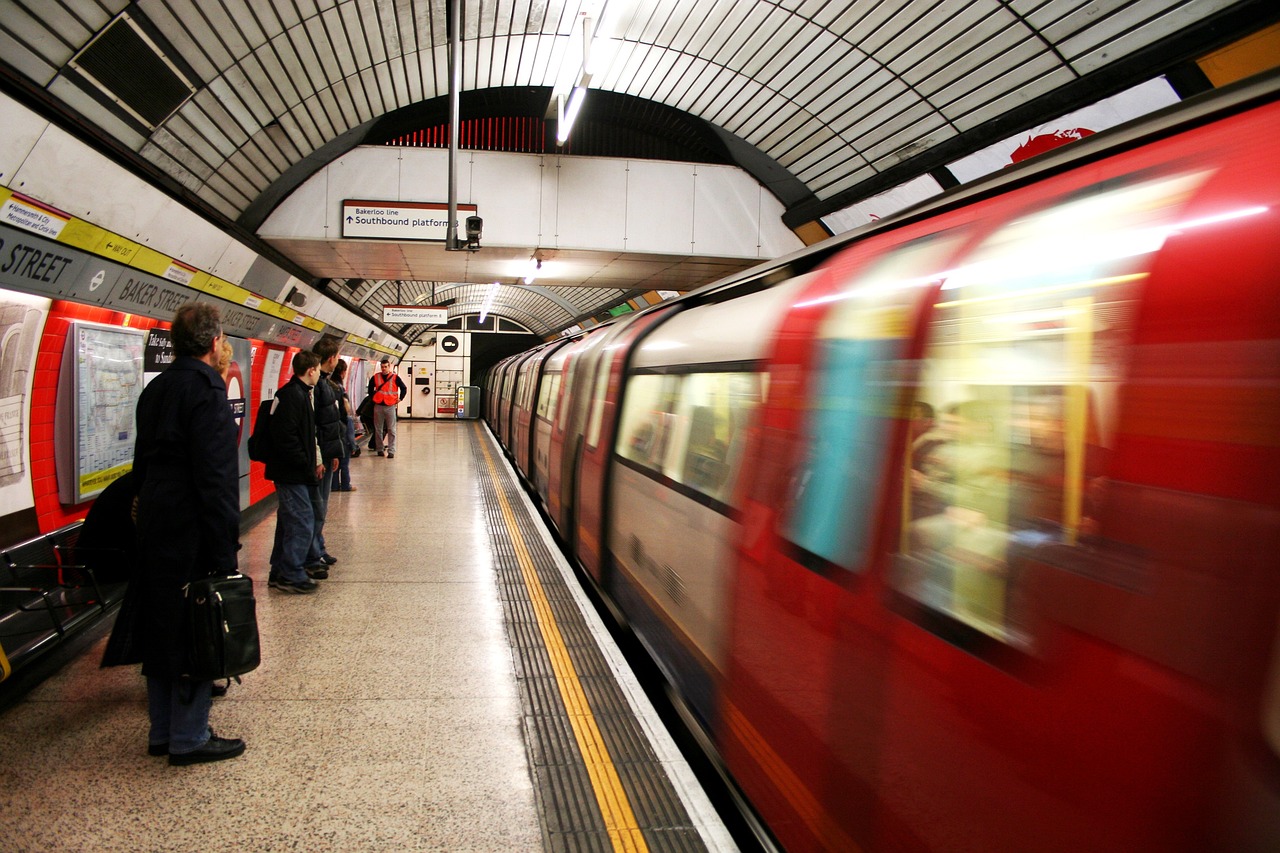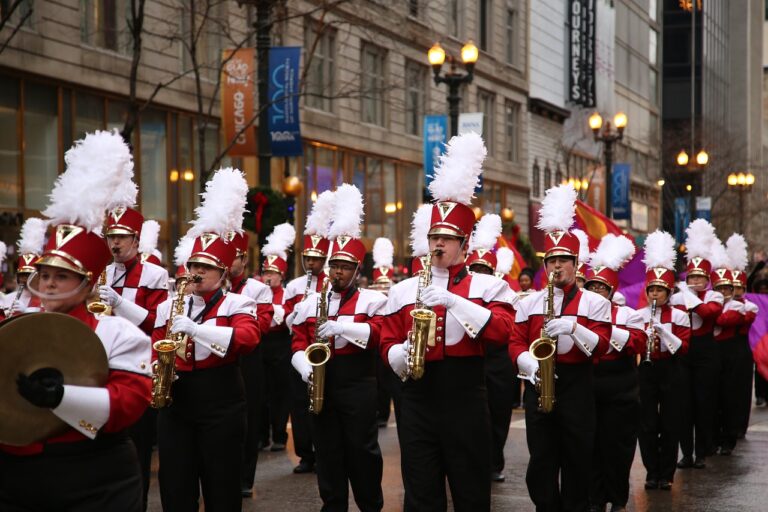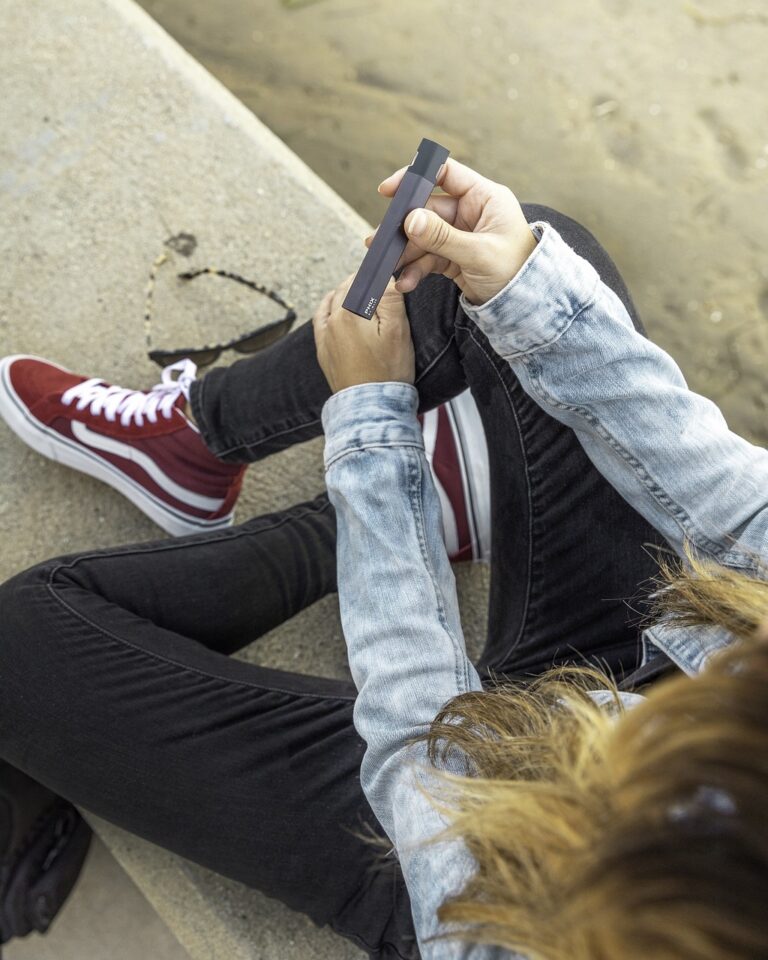15 Essential NYC Subway Hacks for Tourists: Insider Tips, Maps & Apps
How to navigate the NYC subway system
Navigating the NYC subway system can seem daunting at first, but with a few insider tips and tricks, you’ll be able to navigate the city like a regular New Yorker. Whether you’re a tourist or a local, here are some NYC subway hacks for tourists that can help you navigate the bustling underground maze of New York City.
Study the Subway Map: Before embarking on your subway journey, familiarize yourself with the subway map. Look for the major subway lines and their intersections, as these will be your main points of reference.
Plan Your Route: Use a navigation app or website to plan your route ahead of time. This will save you time and prevent you from getting lost. Know the subway line(s) and station(s) you need to get to your destination.
Pay Attention to Express and Local Trains: Some subway lines have express and local trains. Express trains skip certain stops, while local trains make all stops. Be aware of this when planning your route, as taking an express train may get you to your destination faster.
Use Subway Apps: There are several apps available that provide real-time subway updates, including train delays and service changes. Download one of these apps to stay informed and plan your journey accordingly.
Know the Subway Etiquette: When riding the subway, be mindful of the unwritten rules. Give up your seat to those in need, stand to the side of the doors to allow people to exit, and avoid blocking the subway doors.
Purchase a MetroCard: To access the subway, you’ll need a MetroCard. These can be purchased at any subway station. Consider getting an unlimited MetroCard if you plan on using the subway frequently during your stay.
Follow the Signs: Pay attention to the signs and announcements within the subway stations. They will guide you to the correct platform and train.
Remember, the NYC subway system can be crowded, especially during rush hour. Be prepared for busy trains and allow extra time for your journey, especially if you have a tight schedule.
With these subway hacks in mind, you’ll have no trouble navigating the NYC subway system like a true New Yorker. Enjoy your time exploring the city and using the subway to get around efficiently.
Understanding the subway map
Understanding the Subway Map
One of the first things I recommend doing when navigating the NYC subway system is to familiarize yourself with the subway map. It may seem overwhelming at first, but with a little practice, you’ll be able to navigate the subway like a pro.
Here are a few tips to help you understand the subway map:
- Study the color-coded lines: The NYC subway map is color-coded, with each line representing a different route. Take some time to study the map and familiarize yourself with the different lines and their corresponding colors. This will make it easier for you to plan your routes and transfers.
- Identify your starting point and destination: Before you start your journey, identify your starting point and destination. Look for the corresponding subway stations on the map and trace the route you need to take. This will help you get a better understanding of the direction you need to go in.
- Pay attention to express and local trains: The subway map also indicates whether a train is an express or local service. Express trains skip certain stops and can get you to your destination faster, while local trains make all stops along the route. Keep this in mind when planning your trip.
- Use online resources and apps: In addition to studying the physical subway map, there are also many online resources and apps available that provide interactive subway maps and real-time updates. These tools can be incredibly helpful for navigating the subway system, especially if you’re unsure about a particular route or need information on any service disruptions.
Remember, understanding the subway map is just the first step in successfully navigating the NYC subway system. In the following sections, I’ll provide more tips and hacks that will help make your journey even smoother. So, let’s move on to the next topic: planning your route ahead of time.
Planning your route in advance
When visiting NYC as a tourist, planning your subway route in advance is essential for a smooth and efficient journey. Here are a few helpful tips to get you started:
- Use online resources and apps: Before you even set foot in the city, take advantage of online resources and smartphone apps to familiarize yourself with the NYC subway system. There are several reliable apps available that provide real-time updates on train schedules, service changes, and delays. Some popular options include Google Maps, Citymapper, and Transit. These handy tools will help you plan the most efficient route to your destination.
- Study the subway map: The NYC subway map may seem overwhelming at first glance, but it’s actually quite easy to navigate once you understand the basics. Study the color-coded lines and familiarize yourself with the major stations, such as Times Square, Grand Central Terminal, and Union Square. Identifying your starting point and destination on the map will help you determine the most direct route to take.
- Consider express and local trains: When planning your subway route, pay attention to whether a train is express or local. Express trains skip some stations and can get you to your destination faster, but they may not stop at every station along the way. Local trains, on the other hand, make all stops and can be a better option if your destination is closer to a local station. Refer to the subway map or online resources to determine which trains are express and which are local.
- Avoid peak travel times: NYC’s subway system can get extremely crowded during peak travel times, especially during rush hour on weekdays. If you have the flexibility to choose your travel times, try to avoid the morning and evening rush hours to have a more comfortable journey. Opting for off-peak hours will not only give you more space on the train but also reduce the chances of encountering delays.
Buying a MetroCard
When it comes to using the NYC subway system as a tourist, one of the first things you’ll need is a MetroCard. These plastic cards are your key to accessing the subway and buses in New York City. Here are a few tips to keep in mind when buying and using your MetroCard:
1. Where to Buy
You can purchase a MetroCard at any subway station. Look for the vending machines located near the entrance or inside the station. These machines accept both cash and credit cards, making it convenient for everyone. Remember to check the machine’s operating hours as some may not be available during late-night hours.
2. Types of MetroCards
There are two types of MetroCards you can choose from: Pay-Per-Ride and Unlimited Ride. The Pay-Per-Ride option allows you to add a specific amount of money to the card and pay as you go, while the Unlimited Ride option allows you to use the subway and buses as many times as you want within a certain period.
3. Reloadable and Non-Reloadable Cards
MetroCards come in two forms: reloadable and non-reloadable. If you plan to visit New York City frequently, a reloadable card is a convenient choice as you can add more value to it as needed. On the other hand, if you’re just visiting for a short period, a non-reloadable card may be more suitable.
4. Taking Advantage of Bonus Value
When you purchase or refill your MetroCard with a certain amount of money, you may be eligible for bonus value. For example, if you add $10 to your card, you may receive an additional $1 bonus. This can be a great way to make your MetroCard last longer and save money in the long run.
5. Using the MetroCard
Once you have your MetroCard, simply swipe it at the turnstile to enter the subway station. If you have an Unlimited Ride card, you can use it as many times as you want within the specified period. For Pay-Per-Ride cards, the fare will be deducted according to the distance you travel.
Remember to keep your MetroCard safe and separate from your other belongings to avoid any damage or loss. If your card stops working or gets damaged, you can visit the station’s booth and ask for assistance.
Using the subway entrances and exits
Navigating the subway system in New York City can be a bit overwhelming, especially for tourists. But fear not! With a few simple tips, you’ll be able to navigate the entrances and exits like a pro.
1. Familiarize yourself with the different types of entrances:
- Subway entrances can be found on street corners or inside buildings. It’s important to know the different types so you can easily identify them.
- Staircase entrances are the most common and can usually be found on street corners. They are marked with the subway’s round logo and are often accompanied by a green or white token booth.
- In some areas, you’ll find elevator entrances, which are marked with signs indicating accessibility.
- Another type of entrance is the emergency exit, which is marked with a red sign and should only be used in case of an emergency.
2. Choose the right entrance for your destination:
- When planning your subway trip, make sure to choose the entrance that is closest to your starting point and will lead you to the desired train line.
- Some subway stations have multiple entrances, so it’s important to choose the one that aligns with your desired direction of travel.
- Pay attention to the signage at the entrance, as it will indicate which train lines can be accessed from that specific entrance.
3. Be familiar with turnstile etiquette:
- When entering the subway station, you will need to swipe your MetroCard at the turnstile. Make sure to have your card ready and approach the turnstile with confidence.
- Follow the flow of traffic and wait for your turn to swipe your card. Avoid holding up the line by fumbling with your card at the last minute.
- After swiping your card, proceed through the turnstile promptly. Be mindful of any bags or belongings that may get caught.
4. Exiting the subway station:
- When you reach your destination, follow the signs towards the exit. They will help guide you to the appropriate staircase or elevator.
- If you are transferring to another train line, look for signs indicating the transfer point. Follow the signs to the appropriate platform for your next train.
Tapping in and out of the subway
When it comes to using the NYC subway, one of the essential things to know is how to tap in and out of the system. This is important because it ensures you are paying the correct fare for your journey. Here are some helpful tips on tapping in and out of the subway:
1. Use a MetroCard: Before entering a subway station, you’ll need to have a MetroCard. These can be purchased at various locations, including subway station booths and vending machines. They come in different types, such as Pay-per-Ride and Unlimited Ride cards, and offer different benefits.
2. Tapping in: Once you have your MetroCard, locate the turnstiles at the entrance of the subway station. To enter, simply swipe or tap your card on the designated area of the turnstile. A green light will indicate that you can proceed through the turnstile and into the station.
3. Exiting the subway: When it’s time to exit the subway station, find the turnstiles marked with a yellow light. These are for exits only. Again, use your MetroCard to swipe or tap the designated area, and the turnstile will allow you to pass through.
4. Avoid contactless payment issues: If you’re using contactless payment methods like Apple Pay or Google Pay, make sure to keep your device separate from your physical MetroCard. These payment methods can sometimes interfere with the card reader, causing issues when tapping in or out.
5. Fare control areas: Remember to always tap your MetroCard on the designated areas within the fare control areas. These areas may include entry gates, turnstiles, or bus fare box readers. Failing to tap properly can result in a fare evasion charge or even a fine.
6. Check your card balance: To avoid any unexpected surprises, regularly check the balance on your MetroCard. You can do this at vending machines located in subway stations or on the MTA website. It’s always better to be prepared and make sure you have enough fare for your journey.
Peak and off-peak hours
Navigating the NYC subway during peak hours can be quite overwhelming, especially for tourists. Understanding the peak and off-peak hours can help you plan your subway trips more efficiently. Here are a few key points to keep in mind:
- Peak Hours: The subway system experiences heavy passenger volume during peak hours, which are typically weekdays from 7:00 am to 10:00 am and 4:30 pm to 7:00 pm. During these times, trains tend to be crowded, and you may have to deal with longer wait times and limited seating options.
- Off-Peak Hours: On the other hand, off-peak hours are generally less crowded, making your subway experience more comfortable and convenient. Off-peak hours include weekdays before 7:00 am and after 10:00 am, weekends, and public holidays.
Understanding the peak and off-peak hours can greatly impact your subway journey. Here are a few reasons why:
- Avoiding Crowds: Traveling during off-peak hours allows you to avoid the rush of commuters, making your subway experience more pleasant. You’ll have more space to move around and find seats, which can be quite a relief after a long day of exploring the city.
- Reduced Wait Times: During peak hours, trains tend to run more frequently to accommodate the high demand. However, even with increased train frequency, you may still experience longer wait times due to the sheer number of people. Traveling during off-peak hours can help reduce wait times and ensure a smoother and quicker journey.
- Greater Flexibility: Off-peak hours offer greater flexibility when it comes to planning your activities. You can take advantage of shorter wait times and less crowded trains to explore NYC at your own pace. Whether you want to visit a museum, enjoy a leisurely lunch, or take a scenic walk, off-peak hours provide the flexibility to do so without the rush.
- Saving on Fares: Did you know that some subway riders may be eligible for reduced fares during off-peak hours? If you’re using a Pay-Per-Ride MetroCard, you can receive a free transfer when you transfer to a bus within two hours of swiping your card. This can help save on transportation costs if you plan your trips accordingly.
Choosing the right subway line

When navigating the NYC subway system as a tourist, choosing the right subway line is crucial to ensure a smooth and efficient journey. With over 25 subway lines and hundreds of stations, it’s important to know the best line to take for your destination. Here are a few tips to help you choose the right subway line:
- Use the Official Subway Map: Before heading out, make sure to get a hold of the official subway map. You can find it at any subway station or download it from the MTA website. The map will show you all the subway lines and stations, making it easier for you to plan your route.
- Check for Express vs. Local: Some subway lines have both express and local trains. Express trains make fewer stops, which means they can get you to your destination faster. If speed is your priority, look for express trains on the map.
- Consider Transfers: Transfers can help you reach your destination more efficiently. Use the subway map to identify stations where you can transfer to another line that will take you closer to your destination.
- Research Popular Stops: If you’re a tourist visiting popular attractions such as Times Square, Central Park, or the Statue of Liberty, research the subway lines that will take you there directly. This will save you time and avoid unnecessary transfers.
- Avoid Peak Hours: As mentioned earlier in the article, peak hours (7:00 am-10:00 am and 4:30 pm-7:00 pm on weekdays) are characterized by crowded trains and longer wait times. If possible, try to plan your subway trips outside of these hours to have a more comfortable journey.
By considering these factors and doing a little research, you can confidently choose the right subway line that will get you to your destination quickly and efficiently. Remember, the NYC subway system can be overwhelming, but with practice and a bit of knowledge, you’ll be navigating it like a pro in no time.
Understanding express and local trains
When navigating the NYC subway system as a tourist, it is crucial to understand the difference between express and local trains. This knowledge will help you choose the right subway line and prevent any unnecessary detours or delays in reaching your destination.
What are express and local trains?
Express and local trains are two types of train services provided by the NYC subway system. Understanding their characteristics can save you both time and frustration during your journey.
- Express Trains: These trains skip certain stops and run between major stations, allowing for faster travel between distant points. They are denoted by an “E” or an “R” symbol on the subway map.
- Local Trains: Local trains, on the other hand, make stops at all stations along their route. These trains provide access to every station and are denoted by a white circle on the subway map.
Tips for Choosing the Right Train
Now that you know the difference between express and local trains, here are a few tips to help you choose the right train when navigating the NYC subway system:
- Use the Official Subway Map: The official subway map clearly indicates which lines are express and which are local. Pay attention to the symbols on the map to guide your decision.
- Check for Express vs. Local Trains: Before boarding a train, check the signage at the station or consult the electronic screens. They will show if the upcoming train is express or local.
- Consider Transfers: If your destination is not served by an express train, you may need to make a transfer at a designated station. Use the subway map or online resources to plan your transfer.
- Research Popular Stops: If you are visiting popular attractions or landmarks, it’s essential to know if the nearest subway station is served by express or local trains. Research the stops beforehand to avoid any confusion.
Remember, during peak hours, express trains can get crowded. If you prefer a more comfortable journey, it may be wise to opt for a local train even if it takes a bit longer to reach your destination.
By understanding the difference between express and local trains and using the tips provided, you can confidently choose the right subway line and make your way around NYC efficiently and hassle-free.
Transferring between subway lines
Transferring between subway lines can be a bit daunting if you’re not familiar with the NYC subway system. However, with a little bit of planning and the right information, it can be quite simple and efficient. Here are a few tips to help you navigate transferring between subway lines like a pro:
- Plan your route in advance: Before starting your journey, it’s important to know which subway lines you’ll be transferring between. Take a look at the subway map and identify the stations where you’ll need to make transfers. This will save you time and confusion once you’re underground.
- Follow the signs: Once you’re inside the subway station, pay close attention to the signs directing you to the platform for your desired train. Look for signs that indicate which direction the train is heading and follow them to the appropriate platform.
- Be aware of express vs. local trains: Some subway lines have both express and local trains. Express trains skip certain stops and can help you get to your destination faster, while local trains make all stops along the line. Take note of whether the train you need to transfer to is an express or local train, as this may affect which platform you need to be on.
- Allow for extra time: Transferring between subway lines may require you to walk a bit within the station or even go through turnstiles again. It’s important to allow for some extra time in your journey to account for this. Rushing between trains can lead to confusion and even missed connections.
- Use digital resources: There are several online resources and apps that can help you navigate the NYC subway system and plan your transfers. Websites like the MTA’s official website or apps like Google Maps or Citymapper can provide you with real-time updates on train schedules, delays, and recommended transfer routes.
- Ask for help if needed: If you’re feeling overwhelmed or unsure about transferring between subway lines, don’t hesitate to ask for help. MTA staff members are usually available at most subway stations and can assist you in finding the right platform or giving directions.
By following these tips and being prepared, transferring between subway lines in NYC will become much easier and less stressful. Remember to stay calm, be observant, and use the resources available to you. With a little practice, you’ll soon navigate the subway system like a local.
Avoiding crowded subway cars

When navigating the busy NYC subway system as a tourist, it’s important to know how to avoid crowded subway cars. No one wants to be packed like sardines or squeeze into a train during peak hours. Here are some tips and hacks to help you enjoy a more comfortable subway experience:
- Timing is Everything: Try to avoid the rush hours when New Yorkers are commuting to and from work. Peak hours are usually from 7:00 am to 10:00 am and from 4:00 pm to 7:00 pm. If possible, plan your subway trips during off-peak times to have more space and less congestion.
- Be Observant: Before boarding a subway car, take a moment to assess the situation. Look for cars that are less crowded or have more available seating. Sometimes, the first car tends to be more crowded, so consider walking a bit further down the platform to find a less crowded option.
- Use Your Ears: Listen to the announcements on the subway platform. Sometimes, the conductor will mention whether a train is crowded or recommend waiting for the next one. Pay attention to this information and adjust your plan accordingly.
- Be Mindful of Transfers: If you are transferring between subway lines, take into account the station layout and the likelihood of crowded trains. Some transfer stations, like Times Square or Union Square, can be extremely busy, especially during peak hours. If you have the flexibility, consider using a different transfer point that might be less crowded.
With these tips in mind, you can navigate the NYC subway system with more ease and avoid the stress of crowded subway cars. By strategically planning your trips and being aware of the peak hours, you can enjoy a more comfortable and pleasant subway experience as a tourist in the Big Apple.
Finding available seats on the subway
When navigating the NYC subway system as a tourist, finding an available seat can make your journey more comfortable. Here are some tips to help you secure a seat on the subway:
- Timing is Everything: One of the best ways to find an available seat is to time your trips during off-peak hours. Avoiding rush hour (generally 7-9am and 5-7pm on weekdays) can significantly increase your chances of finding a seat.
- Be Observant: As you enter the subway car, take a quick scan to see if there are any available seats. Look for people getting up or leaving seats, or empty seats that are visible from the entrance. If you’re quick enough, you may be able to nab a seat before someone else does.
- Look for Less Crowded Cars: If you notice that one subway car is particularly crowded, try moving to the next car. Sometimes, the first car is the most crowded due to its proximity to the station entrance. By moving to a less crowded car, you increase your chances of finding an available seat.
- Listen to Announcements: Pay attention to announcements made by the train conductor. They may provide information about crowded trains or suggest moving to a less crowded car. This can be especially helpful during peak hours when finding a seat may be more challenging.
- Be Mindful of Transfer Stations: Keep in mind that transfer stations, where multiple subway lines intersect, can be busy with commuters rushing to catch their next train. If you’re looking for a seat, it’s best to avoid transfer stations and opt for less busy stations instead.
Remember, securing a seat on the subway is not always guaranteed, especially during peak hours. However, by following these tips and being proactive, you can increase your chances of finding an available seat and enjoy a more comfortable ride throughout your visit to NYC.
Safety tips for riding the subway
When navigating the NYC subway system as a tourist, it’s important to prioritize your safety. Here are some essential tips to keep in mind:
- Be aware of your surroundings: Whether you’re waiting on the platform or inside the train, make sure to stay alert and aware of your surroundings. Keep an eye on your belongings and be cautious of any suspicious behavior.
- Avoid traveling alone late at night: If possible, try to avoid traveling alone on the subway late at night, especially if you’re unfamiliar with the area. It’s always a good idea to have a travel partner or use alternative transportation methods during these times.
- Stand clear of the doors: As the subway doors open and close, be sure to stand clear and avoid blocking the entrance or exit. This helps to ensure a smooth flow of passengers and prevents accidents.
- Beware of pickpockets: Unfortunately, crowded subway cars can be a prime target for pickpockets. To protect yourself, keep your valuables secure and avoid displaying them openly. Use a bag that can be worn across your body and keep it in front of you in crowded spaces.
- Know the emergency procedures: Familiarize yourself with the emergency procedures and protocol for the subway system. Take note of the locations of emergency exits, emergency intercoms, and evacuation routes in case of any unforeseen circumstances.
- Follow the rules and regulations: The NYC subway system has rules and regulations that are in place for the safety and convenience of all passengers. Make sure to observe these rules, such as no smoking, no littering, and no blocking the fare gates.
Remember, by following these safety tips, you can have a smooth and secure experience while riding the NYC subway. Stay vigilant, be prepared, and enjoy your journey throughout the city.
Using subway apps and websites for real-time updates
Nowadays, technology makes it easier than ever to navigate the NYC subway system. One of the most valuable tools in your arsenal is subway apps and websites that provide real-time updates.
These resources can help you stay informed about delays, schedule changes, and service disruptions, ensuring a smoother journey.
Here are a few subway apps and websites that I recommend for real-time updates:
- MTA website and app: The Metropolitan Transportation Authority (MTA) official website and app are essential resources for subway information. They provide real-time service status, planned service changes, and alerts, so you can plan your route accordingly. The app even features a “Trip Planner” function that calculates the fastest route based on your starting point and destination.
- Google Maps: Google Maps is a widely-used navigation app that also incorporates subway information. By simply entering your starting point and destination, Google Maps will provide you with step-by-step directions that include subway routes, transfers, and real-time service updates. It’s a convenient and user-friendly option for tourists.
- Citymapper: Citymapper is another popular app that offers detailed and accurate public transportation information. It covers various cities worldwide, including NYC, and provides comprehensive data on subway routes, service changes, and disruptions. It also includes features like “Nearby Stations” and “Live Departures” to help you navigate the subway system efficiently.
By using these subway apps and websites, you can avoid unnecessary delays and make informed decisions about your travel plans. Some apps even offer additional features like fare calculators, station amenities, and estimated arrival times. Remember to check for updates before heading out, as subway conditions can change quickly.
Remember, technology is a powerful ally when it comes to navigating the NYC subway system. Embrace these resources, stay informed, and enjoy your subway adventure without unnecessary stress or delays.
Fare evasion and consequences
As a tourist visiting New York City, it’s important to understand and follow the rules of the NYC subway system. One rule that should be taken seriously is paying the correct fare for your journey. Fare evasion, which refers to riding the subway without paying or attempting to use an expired or invalid MetroCard, is illegal and can have serious consequences.
Here are a few important points to keep in mind about fare evasion and its consequences:
- Penalties: The MTA takes fare evasion seriously and has strict penalties in place. If caught evading the fare, you could receive a fine up to $100, and in some cases, even face arrest. It’s not worth the risk, both financially and legally.
- Increased Enforcement: In recent years, the MTA has increased its efforts to combat fare evasion. They have deployed more personnel, including plainclothes officers, to catch fare evaders. Additionally, they have installed new fare evasion prevention technologies, such as the OMNY contactless payment system.
- Ticket Vending Machines: To avoid any confusion or inconvenience, make sure to purchase a MetroCard or use contactless payment options, like credit cards or mobile wallets, before entering the subway. The ticket vending machines are located in every station and provide instructions in multiple languages.
- Random Inspections: Be aware that the MTA conducts random inspections where you may be asked to show proof of payment. If you are found to have evaded the fare, you may be subjected to fines or further consequences.
- Ethical Responsibility: Finally, remember that fare evasion is not only illegal but also unethical. The fares collected from riders contribute to maintaining and improving the subway system to ensure safe and reliable transportation for everyone. It’s important to do your part as a responsible tourist.
By understanding and adhering to the fare payment rules of the NYC subway system, you can ensure a hassle-free and enjoyable experience during your visit. Remember, paying the correct fare is not only the law but also the right thing to do.
Conclusion
Navigating the NYC subway system can be overwhelming for tourists, but with these subway hacks, you’ll be able to explore the city with ease. By understanding the subway map, planning your routes, and utilizing online resources and apps for real-time updates, you can ensure a smooth and efficient journey.
It’s important to always pay the correct fare and avoid fare evasion, as the MTA has strict penalties in place. To avoid any issues, purchase a MetroCard or use contactless payment options before entering the subway, and be prepared for random inspections. Remember, fare evasion is not only illegal but also unethical, as the fares collected contribute to maintaining and improving the subway system.
By adhering to the fare payment rules, you can have a hassle-free and enjoyable experience while exploring the vibrant city of New York. So go ahead, hop on the subway, and enjoy all that NYC has to offer!





